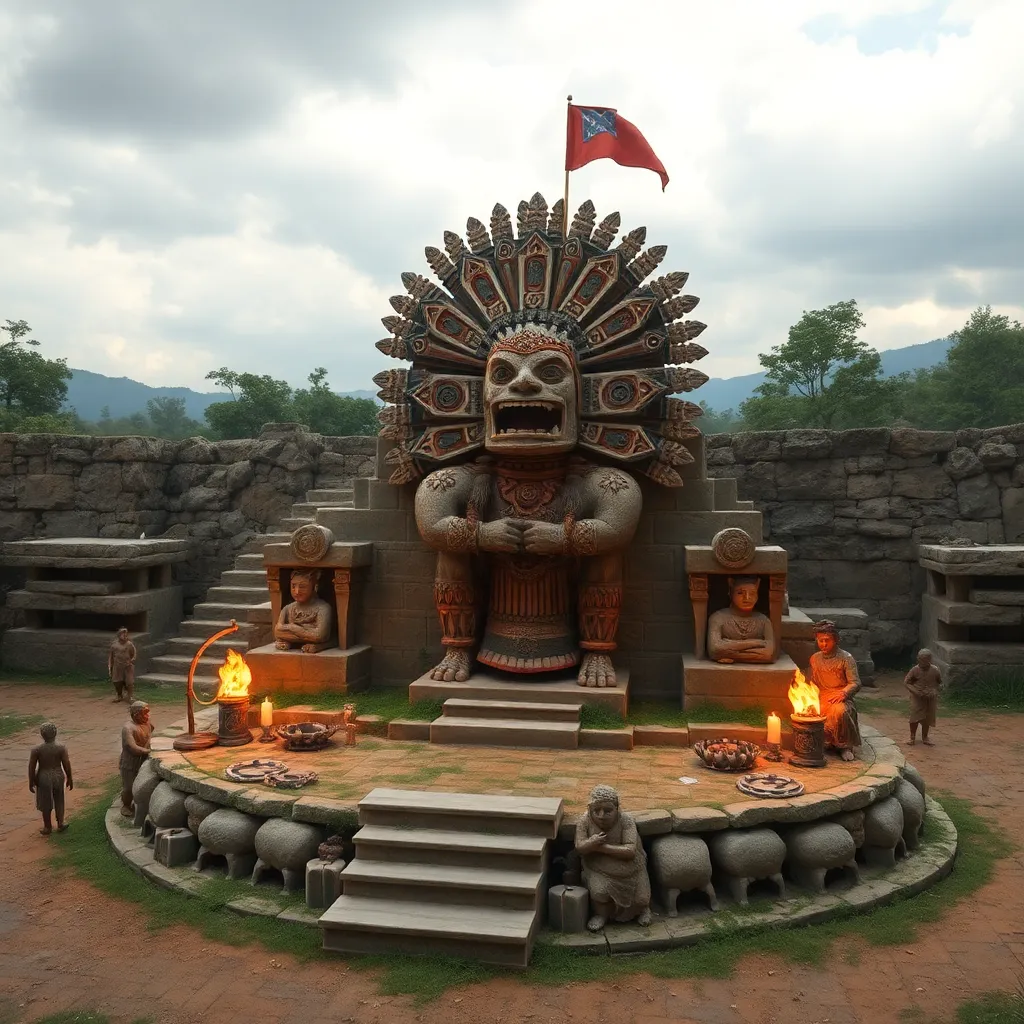The Bat King: Exploring the Role of Camazotz in Aztec Mythology
I. Introduction to Camazotz
Camazotz is a fascinating figure in Aztec mythology, often referred to as the “Bat God.” The name itself derives from the Nahuatl word ‘camazotl,’ which translates to ‘bat.’ This etymological root emphasizes his association with bats, creatures that play significant roles in various Mesoamerican cultures.
In Aztec culture, Camazotz held considerable significance as a deity of darkness, death, and the underworld. He was not merely a figure of fear but also an essential part of the agricultural and spiritual life of the Aztecs. This article aims to explore the multifaceted role of Camazotz, shedding light on his origins, symbolism, and enduring legacy.
II. The Mythological Origins of Camazotz
The mythological framework of the Aztecs is rich and complex, involving numerous deities and creation myths. Camazotz features prominently in several of these narratives, often associated with themes of creation and destruction.
In one creation myth, Camazotz is depicted as a primordial being who played a role in the creation of the world alongside other deities. His relationship with figures such as Tezcatlipoca, the god of night, and Quetzalcoatl, the feathered serpent, illustrates the interconnectedness of Mesoamerican deities.
- Camazotz’s role in the creation myths highlights his importance in the struggles between light and darkness.
- He represents the duality of life and death, a central theme in Aztec beliefs.
III. Camazotz as the Bat God
Bats held a unique place in Aztec culture, often symbolizing death and rebirth. This symbolism is deeply intertwined with Camazotz’s identity as the Bat God.
Attributes and characteristics attributed to Camazotz include:
- Guardian of the underworld.
- Symbol of fertility and agricultural abundance.
- Bringer of death and transformation.
Iconography of Camazotz can be found in various artifacts, including pottery and sculptures. He is often depicted with bat-like features, such as elongated ears and fanged teeth, emphasizing his fearsome nature. These representations serve as reminders of the balance between life and death that he embodies.
IV. Camazotz’s Role in Aztec Cosmology
In Aztec cosmology, Camazotz plays a pivotal role in maintaining the balance between life and death. His associations with the underworld and the afterlife are essential in understanding the Aztec worldview.
Significant aspects of Camazotz’s cosmological role include:
- His connection to Xibalba, the underworld, where souls journey after death.
- His influence on agricultural cycles, as death leads to rebirth in nature.
- The belief that offerings to Camazotz could ensure a bountiful harvest and protection from misfortune.
V. Rituals and Worship of Camazotz
The worship of Camazotz involved various rituals and ceremonies aimed at appeasing the Bat God and ensuring his favor. Practices included:
- Elaborate ceremonies held during specific times of the year, particularly during the harvest season.
- Offerings of food, incense, and even animal sacrifices to honor Camazotz.
- Participation of priests and shamans, who played crucial roles in mediating between the divine and the earthly realms.
These rituals were not just acts of devotion but also vital for the community’s survival, illustrating the deep interconnections between spirituality and daily life in Aztec society.
VI. Camazotz in Literature and Art
Camazotz has been depicted in various Aztec codices and manuscripts, showcasing his significance in the mythology of the time. These depictions often highlight his bat-like features and his role in the underworld.
Influence on contemporary interpretations of Aztec mythology can be seen in numerous works of literature and art, where Camazotz is often featured as a symbol of the mysterious and the unknown. A comparative analysis reveals how other Mesoamerican deities, such as Mictlantecuhtli, the god of death, share similarities with Camazotz, emphasizing universal themes of life, death, and transformation.
VII. Legacy of Camazotz in Modern Culture
The legacy of Camazotz has seen a revival of interest in Aztec mythology in recent years. This resurgence is evident in various forms of popular culture, including:
- Films and television shows that explore Mesoamerican myths.
- Books and graphic novels that feature Camazotz as a central character.
- Modern spiritual practices that draw inspiration from ancient Aztec beliefs.
The impact of Camazotz on modern spirituality and folklore continues to evolve, reflecting a growing appreciation for indigenous myths and their relevance in contemporary society.
VIII. Conclusion
In summary, Camazotz, the Bat King, encapsulates the complex interplay of life, death, and rebirth in Aztec mythology. His significance extends beyond mere folklore, offering insights into the spiritual and agricultural practices of the Aztecs.
The enduring relevance of Camazotz invites us to reflect on the importance of ancient myths in understanding cultural identities and values. As society continues to navigate the complexities of modern life, the stories of deities like Camazotz remind us of the timeless themes that connect us across generations.



